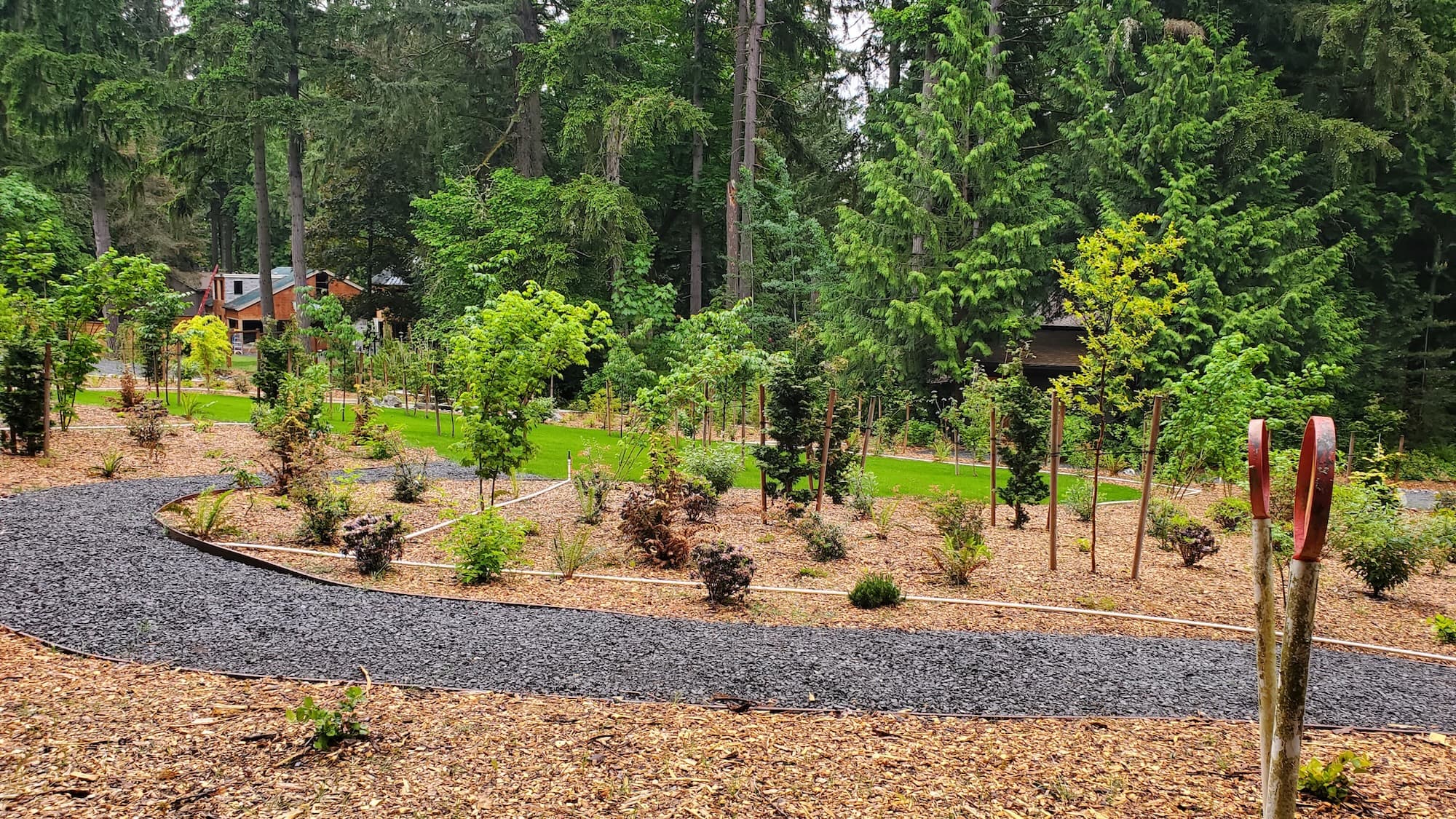West Seattle Correct poor branch spacing
Homeowner’s Issue
West Seattle yards get a lot of rain, fog, and shade — heavy Oct–Apr rainfall with a dry spell in July–August. Soils here are often compacted glacial till or clay in older neighborhoods, with lighter sandy pockets near Alki and fill slopes in High Point. That mix plus dense canopies from bigleaf maple, Douglas-fir, and older ornamentals produces crowded branch structure, poor light penetration, and moss buildup on shaded trunks.
Poor branch spacing shows up as crossed limbs, shaded inner crowns, and ivy or blackberry climbing into the canopy. Over time that increases fungal pressure and storm-failure risk during our windy winter storms. Sloped sites and narrow West Seattle lots (common around Admiral and the peninsula) complicate access and drainage; poorly spaced branches can funnel water into foundations or block sight lines for driveways and tight sidewalks. HOAs and neighborhood standards here often expect tidy street-facing trees, so structural pruning that balances safety, long-term health, and curb appeal matters. We use sustainable, non-chemical methods to restore crown balance, improve sunlight to under-plantings, and reduce recurring maintenance in the seasons ahead.
Our Quality Service
We correct branch spacing with selective, structural pruning focused on long-term form and safety. Work includes an on-site assessment, clear plan, and hand-pruning with pole saws, pruning saws, and climbing gear where required. For small specimens we typically finish within 1–3 hours; medium trees take a half day; larger structural jobs may need a full day or an ISA-certified arborist and a follow-up visit.
Local specifics we account for:
- Compacted soils and root collar issues common in West Seattle.
- Rainy season constraints; major cuts scheduled late winter/early spring when trees are dormant.
- Slope and access: we set up to protect lawns and minimize erosion on steeper sites.
We compost chips on-site or haul to green waste, install organic mulch, and avoid herbicides — only manual or organic controls for invasives. The benefits are safer trees, reduced storm risk, better light for plants, and lower maintenance over time.
What’s Included
- On-site assessment and pruning plan.
- Selective thinning and removal of crossing/weak branches.
- Crown cleaning to improve airflow and reduce fungal risk.
- Debris management: chip & spread mulch or haul-away to green waste (your choice).
- Site cleanup and brief after-service care notes.
Options / upgrades:
- Mulch installation from chips + fabric-free weed suppression.
- Organic soil amendment or compost ring at root collar.
- Manual invasive removal (ivy, blackberry) and root removal.
- Planting recommendations for low-maintenance replacements.
Before & After / Expectations
- Noise & mess: chainsaws and chippers create noise and wood chips; expect a tidy but earthy post-job yard.
- Access: driveway or curb space for a truck and chipper makes the job faster and cheaper. Tight access can add time.
- Debris handling: choose chip-and-spread (sustainable, saves disposal fees) or full haul-away to green waste.
- Timeline: structural pruning shows benefit in the first season; form correction can take 1–3 seasons to settle.
Care tips for West Seattle: - Water new root-zone amendments through July–August dry windows, early morning.
- Watch for ivy and blackberry in spring; hand-pull roots to prevent re-climbing.
- Moss on shaded trunks is managed by improving light and airflow rather than chemical treatment.
FAQs (3–5)
Q: When is the best time to prune in West Seattle?
A: Late winter to early spring while trees are dormant is ideal; avoid heavy pruning in the wettest months to reduce disease pressure.Q: Do you use herbicides for ivy or blackberry?
A: No — we use manual removal and organic methods only.Q: How long does a typical job take?
A: Small trees 1–3 hours; medium trees half a day; large trees or multi-tree properties may need a full day or more.Q: Will pruning damage my tree’s look?
A: We prioritize structural cuts and natural form. Some short-term thinning is visible but it preserves the tree’s long-term shape.
Call to Action
West Seattle homeowners: book a free estimate to correct poor branch spacing and reduce storm risk. We schedule quickly, work cleanly, and focus on sustainable, long-term results for properties from Alki to High Point. Trusted local crew, transparent pricing, and options for chip reuse or haul-away.
Email: neatandtidyseattle@gmail.com
Phone: 206-538-9344
Licensed • Bonded • Insured










